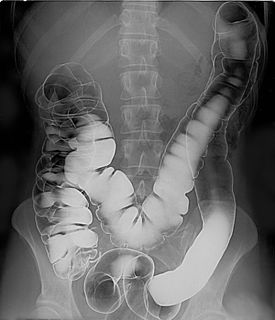External links
- Spiculated mass entry in the public domain NCI Dictionary of Cancer Terms
![]() This article incorporates public domain material from the U.S. National Cancer Institute document: "Dictionary of Cancer Terms".
This article incorporates public domain material from the U.S. National Cancer Institute document: "Dictionary of Cancer Terms".
It is proposed that this article be deleted because of the following concern:
If you can address this concern by improving, copyediting, sourcing, renaming, or merging the page, please edit this page and do so. You may remove this message if you improve the article or otherwise object to deletion for any reason. Although not required, you are encouraged to explain why you object to the deletion, either in your edit summary or on the talk page. If this template is removed, do not replace it . The article may be deleted if this message remains in place for seven days, i.e., after 23:16, 28 August 2021 (UTC). Find sources: "Spiculated mass" – news · newspapers · books · scholar · JSTOR |
In oncology, a spiculated mass is a lump of tissue with spikes or points on the surface. It is suggestive but not diagnostic of malignancy, i.e. cancer. It's a common mammography finding in carcinoma breast.
![]() This article incorporates public domain material from the U.S. National Cancer Institute document: "Dictionary of Cancer Terms".
This article incorporates public domain material from the U.S. National Cancer Institute document: "Dictionary of Cancer Terms".

Acute myeloblastic leukemia without maturation is a quickly progressing disease in which too many immature white blood cells are found in the blood and bone marrow.
An adnexal mass is a lump in tissue of the adnexa of uterus. Adnexal masses can be benign or cancerous, and they can be categorized as simple or complex. One of the most important factors used to determine the clinical suspicion of malignancy of an adnexal mass is the sonographic appearance of the mass. Indications that the mass is at a higher risk of being malignant include the presence of loculations, nodules, papillary structures, or septations or a size greater than 10 cm.
ALVAC-CEA vaccine is a cancer vaccine containing a canary pox virus (ALVAC) combined with the carcinoembryonic antigen (CEA) human gene.

Arctiin is a lignan found in many plants of the family Asteraceae, particularly the greater burdock and Centaurea imperialis, and in Trachelospermum asiaticum, Saussurea heteromalla, and Forsythia viridissima. It is the glucoside of arctigenin.

Atamestane, also known as metandroden, as well as 1-methylandrosta-1,4-diene-3,17-dione, is a steroidal aromatase inhibitor that was studied in the treatment of cancer. It blocks the production of estrogen in the body. The drug is selective, competitive, and irreversible in its inhibition of aromatase.

Medullary breast carcinoma is a rare type of breast cancer that often can be treated successfully. It is relatively circumscribed.
Collagen disease is a term previously used to describe systemic autoimmune diseases, but now is thought to be more appropriate for diseases associated with defects in collagen, which is a component of the connective tissue.

A double-contrast barium enema is a form of contrast radiography in which x-rays of the colon and rectum are taken using two forms of contrast to make the structures easier to see. A liquid containing barium is put into the rectum. Barium is a silver-white metallic compound that outlines the colon and rectum on an x-ray and helps show abnormalities. Air is also put into the rectum and colon to further enhance the x-ray.
Transrectal biopsy is a biopsy procedure in which a sample of tissue is removed from the prostate using a thin needle that is inserted through the rectum and into the prostate. Transrectal ultrasound (TRUS) is usually used to guide the needle. The sample is examined under a microscope to see if it contains cancer.
Wedge resection is a surgical procedure to remove a triangle-shaped slice of tissue. It may be used to remove a tumor or some other type of tissue that requires removal and typically includes a small amount of normal tissue around it. It is easy to repair, does not greatly distort the shape of the underlying organ and leaves just a single stitch line as a residual.
Spindle cell carcinoma is a type of cancer that begins in the skin or in tissues that line or cover internal organs and that contains long spindle-shaped cells. It is also called sarcomatoid carcinoma.
Tumor-associated glycoprotein 72 (TAG-72) is a glycoprotein found on the surface of many cancer cells, including ovary, breast, colon, lung, and pancreatic cancers. It is a mucin-like molecule with a molar mass of over 1000 kDa.
In the various fields of healthcare, a population study is a study of a group of individuals taken from the general population who share a common characteristic, such as age, sex, or health condition. This group may be studied for different reasons, such as their response to a drug or risk of getting a disease.
Plaque radiotherapy is a type of radiation therapy used to treat eye tumors. A thin piece of metal with radioactive seeds placed on one side is sewn onto the outside wall of the eye with the seeds aimed at the tumor. It is removed at the end of treatment, which usually lasts for several days.
Nodular parenchyma is a small mass of tissue within a gland or organ that carries out the specialized functions of the gland or organ.
Needle-localized biopsy is a procedure that uses very thin needles or guide wires to mark the location of an abnormal area of tissue so it can be surgically sampled. An imaging device such as an ultrasound probe is used to place the wire in or around the abnormal area. Needle localization is used when the doctor cannot feel the mass of abnormal tissue.

Mucinous carcinoma is a type of cancer that arises from epithelial cells; these line certain internal organs and skin, and produce mucin. Over 40 percent of all mucinous carcinomas are colorectal.
Embryoma is a mass of rapidly growing cells believed to originate in embryonic (fetal) tissue. Embryonal tumors may be benign or malignant, and include neuroblastomas and Wilms tumors. Also called embryoma. Embryomas have been defined as: "Adult neoplasms expressing one or more embryo-exclusive genes."

Parathyroid carcinoma is a rare cancer resulting in parathyroid adenoma to carcinoma progression. It forms in tissues of one or more of the parathyroid glands.
Segmental resection is a surgical procedure to remove part of an organ or gland, as a sub-type of a resection, which might involve removing the whole body part. It may also be used to remove a tumor and normal tissue around it. In lung cancer surgery, segmental resection refers to removing a section of a lobe of the lung. The resection margin is the edge of the removed tissue; it is important that this shows free of cancerous cells on examination by a pathologist.